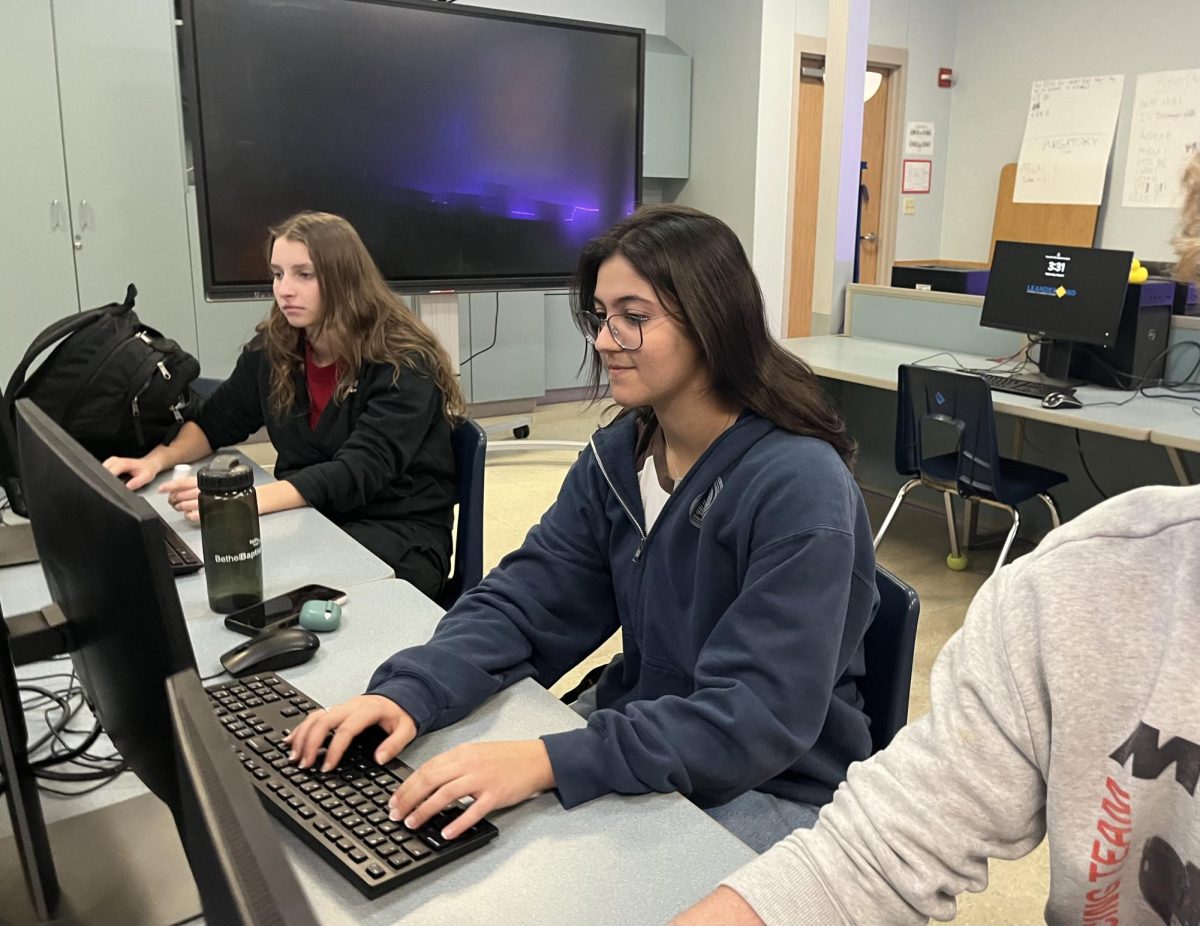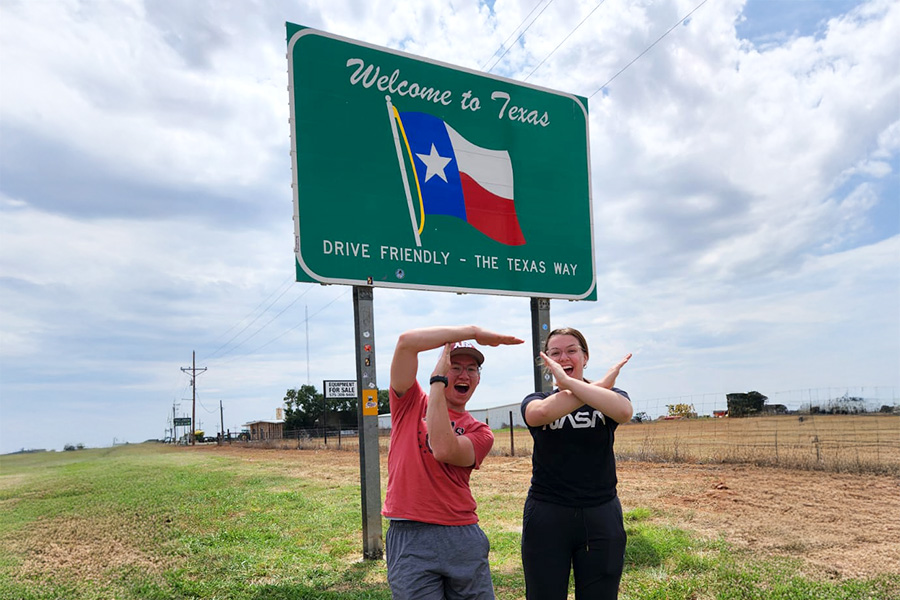Cooperation or Conflict
Political Action in a Time of Division
Photo by Adam Schultz on Creative Commons
The Bipartisan Infrastructure Bill and the Build Back Better Bill are two parts of Biden’s Build Back Better plan to recover the American economy. Both of them provide well-needed funding to recover from the COVID-19 recession. However, the difference between the Bipartisan Infrastructure Bill and the Build Back Better Bill’s legislative processes opens up interesting questions about the need for bipartisanship in dire economic times like these.
November 11, 2021
On Oct. 28, President Joe Biden unveiled a $1.75 trillion bill called the Build Back Better Act, or BBB, which plans to address issues like climate change, universal Pre-K coverage and pandemic preparedness. It sounds like a steep price tag until it’s compared to the previous version of the Build Back Better Act, which had a funding of $3.5 trillion that caused a firestorm of negotiations, leading to some of the most virulent criticism to ever be thrown towards Congress by the public. These negotiations and the counterpart Bipartisan Infrastructure Bill written by both Democrats and Republicans ultimately show that conflict and disagreement is sometimes a small price to pay for inaction.
Criticism wasn’t across party lines like usual – right now, it’s expected that all 50 senate Republicans would vote against more social spending. Two Democratic senators in particular, Senator Joe Manchin of West Virginia and Senator Kyrsten Sinema of Arizona, received the brunt of the condemnation from advocates of more social spending in their own party. After all, in a 50-50 senate, the passage of Build Back Better would be assured if these two simply voted in favor.
Manchin and Sinema’s resistance to the $3.5 trillion price tag is not completely unjustifiable. Manchin’s state, West Virginia, went overwhelmingly for Trump by 42 percentage points in 2020. Sinema’s state of Arizona only went to Biden by a 0.3 percent margin amid a state election that was hotly contested by Trump supporters, showing the enthusiastic right-wing base of Arizona that Sinema feels the need to moderate herself against in order to win re-elections.
While there is an ongoing need in America to reach across the aisle and communicate with people who politically disagree, the discourse surrounding the BBB negotiations shows that there are limits to bipartisanship and moderation. Moderation is a means to an end – it can be an effective method of passing legislation that would not otherwise make it, such as the bipartisan infrastructure bill that was passed on Nov. 5 in the House of Representatives with the help of 13 Republican votes. The efforts to negotiate with Republicans for the Bipartisan Infrastructure Act was spearheaded by Manchin and Sinema themselves, and some of the policies in the bill were wholly necessary to pass in the nation’s efforts to recover from the COVID-19 recession.
On the other hand, their response to the original $3.5 trillion proposal from Biden was less than stellar. Even when considering that Biden planned to use $3.5 trillion over 10 years, both of them balked at the surface-level price tag that would’ve funded free community college, paid family and medical leave (of which the United States is one of the only countries with none) and expanded Medicare coverage for vision and dental services.
Even if it could be justified for West Virginia’s Manchin, who is from one of the reddest states in the country, the same can’t be said for Sinema. According to FiveThirtyEight.com, Sinema’s method in Arizona is rallying more moderate and conservative voters rather than left-wing Arizonians. On the surface, it seems like a viable strategy. If you’re a Democrat, it’s better that there are any Democrats in office as opposed to a Republican. But her colleague, Democratic Senator Mark Kelly, has nearly the same level of support as Sinema in their home state of Arizona – 47 percent for Kelly to 46 percent for Sinema – while appealing more broadly to Democrats.
Bipartisanship and moderation are concepts that sound nice on paper. Each side has a rational discussion with each other, reaches the best of both worlds, and leaves everyone happy. Of course, as was mentioned with the BIF, there are uses for bipartisanship and it is an effective means to an end. However, it is not an end goal – if there is a way of convincing someone about the viability of a policy, and if electoral chances are not hurt when the policy is passed, then moderation is unnecessarily getting in the way of well-needed policy. Conflict is not an inherently bad thing if the alternative is preventing popular, crucial legislation from passing.
What the average, working-class person needs is progressive economic policy. Convincing them that it’s good policy will not happen with the legislative process going as roughly as it is due to the moderate opposition. For politically-minded readers who are aware of the benefits of the Build Back Better Act, notify your community that it’s everyday, “tabletop” issues the BBB tries to address. It addresses the childcare that American parents are needing more help with than ever. It addresses small businesses negatively impacted by the COVID-19 recession. It addresses affordable housing and expanded access to home care for disabled Americans. Forgoing these issues or decreasing their funding is always better than nothing. If it enjoys support, though, and would help Americans with every dollar added towards its projects, obstructing it is antithetical to progress.

![Posing with their UIL State Trophy, the Robolobos Van Halen Team beams with excitement after their win. “It was a team effort,” junior Noah Vo said. “I was happy because something happened in the first match and the match was also really close. So [when] they finally revealed it, I was pretty happy.” Photo courtesy of Amy Lovelace](https://cphswolfpack.com/wp-content/uploads/2025/05/IMG_0910-EDIT-1200x723.jpg)

![Broadcast, yearbook and newspaper combined for 66 Interscholastic League Press Conference awards this year. Yearbook won 43, newspaper won 14 and broadcast took home nine. “I think [the ILPC awards] are a great way to give the kids some acknowledgement for all of their hard work,” newspaper and yearbook adviser Paige Hert said. “They typically spend the year covering everyone else’s big moments, so it’s really cool for them to be celebrated so many times and in so many different ways.”](https://cphswolfpack.com/wp-content/uploads/2025/05/edited-ILPC.jpg)













![Bringing her arm over her head and taking a quick breath, junior Lauren Lucas swims the final laps of the 500 freestyle at the regionals swimming competition on date. Lucas broke the school’s 18-year-old record for the 500 freestyle at regionals and again at state with a time of 4:58.63. “I’d had my eye on that 500 record since my freshman year, so I was really excited to see if I could get it at regionals or districts,” Lucas said. “ State is always a really fun experience and medaling for the first time was really great. It was a very very tight race, [so] I was a bit surprised [that I medaled]. [There were] a lot of fast girls at the meet in general, [and] it was like a dogfight back and forth, back and forth.” Photo by Kaydence Wilkinson](https://cphswolfpack.com/wp-content/uploads/2025/03/Kaydence-2.7-23-edit-2.jpg)
![As the support team sits and poses for a photo in the cafeteria with the counseling team they eagerly wait to start their day. "We [all] seem to be a team, I get up every day and there's days where I don't want to go to work today, but I'm thankful that I have a job and I'm blessed to have what I have," Christopherson said. Photo Courtesy of Julie Weltens.](https://cphswolfpack.com/wp-content/uploads/2025/01/AF9E8470-10D7-4C91-BF28-EC8F86BAB66C-1200x852.jpeg)
![Officer Stephanie Cash is in her second year as an SRO at CPHS. “Seeing [students] grow over the years has been kind of cool,” Officer Cash said. “Freshmen that [are] all over the place and then in the next couple of years get a little more squared away and go to class and do work and start thinking about the future. Being a part of a student's growth is the best way to measure my success as an SRO.” Photo Courtesy of Cedar Park Police Department's PIO, Alicia Gallagher.](https://cphswolfpack.com/wp-content/uploads/2024/12/CPHS-SRO-900x1200.jpg)



![Taking a breath as he raises his arm up and out of the water, sophomore Kaden Padilla swims the 500 freestyle at the UIL state meet on Feb. 21-22. Padilla placed 10th overall and second in the consolation final in the event, dropping two seconds. “My family was there, so being able to drop time for them was really special,” Padilla said. “It was awesome [finding out I advanced to the consolation finals]. I wasn’t expecting it, and I was very surprised. My parents being there definitely made me a lot happier knowing they got to see me swim in finals.” Photo by Skyler King.](https://cphswolfpack.com/wp-content/uploads/2025/03/kaden-padilla.jpg)

![Three defenders try to stop senior point guard Hope Edwards before the ball leaves her hands. The girls basketball team faced Liberty Hill on Feb 21, losing 58-40. “[My season was] definitely bittersweet,” Edwards said. It's definitely sad [because] I'm gonna miss all my teammates, my coaches and just the whole CP environment.”](https://cphswolfpack.com/wp-content/uploads/2025/03/julia-128-1200x800.jpg)


























![Whereas classical art depicts a scene and tells a story, often of mythology or religious references, artists of modern times focus more on expressing ideas and feelings. The style of back then has since been replaced by splashes of color, curvy lines and other new art techniques. "[Over time] I think art has shifted more to emotion rather than human beauty, " sophomore Braeden Murray said. "Modern art is significantly more abstract and doesn't have an obvious theme in mind. Very simple shapes, no people to be seen, and more colorful. I think in the older [time period] the art was definitely more human based, with biblical [references] while modern art is more emotion based because it's not depicting a particular scene or action that's happening.”](https://cphswolfpack.com/wp-content/uploads/2023/02/2023-vs-1503-300x200.png)





